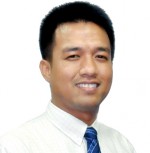
Heru Sutadi, founder and executive director, ICT Institute, Indonesia
Heru Sutadi, founder and executive director, ICT Institute, Indonesia is appearing on Day One of the LTE World Summit taking place on the 24th-26th June 2013, at the Amsterdam RAI, Netherlands. Ahead of the show we find out more about this thoughts on the issues of roaming spectrum harmonisation.
What overall impact has the development of advanced telecom services, and specifically 4G, had in Indonesia?
Telecommunications developments, and in particular 4G, will have a great positive impact on the Indonesian community’s economy and job creation prospects. As a predominantly mobile broadband country, Indonesia requires the latest wireless technology because the public need high-speed access, putting pressure on the operators to provide a higher quality of service for its users.
What areas need to be focussed on to improve the environment for LTE roaming?
To develop LTE roaming, a suitable environment should be built, the focus of this being the harmonisation of frequencies in the region and around the world. This will then enable interoperability between mobile devices and customer premises equipment (CPE). Without proper regard for interoperability, and the use of LTE/4G frequencies that do not match the frequency allocation used in other countries, roaming will of course be a problem.
How important will spectrum harmonisation be for the mobile technology that follows LTE?
Harmonisation of the frequency spectrum will be very important as it will help lower the price of mobile device and CPE and also improve interoperability for users when roaming abroad.
What do you think will be the most exciting development in telecoms in the next two years?
In the next two years, the speed and capacity of telecommunications equipment will increase. This needs to be done to meet the challenges of rapid increase in the demand for data. Large files such as video will dominate but other applications will also be so important, because what is the use of a high-speed network if it is only used for conversations or SMS.
Why is the LTE World Summit such a critical event in your calendar?
The LTE summit is very important because through this event we can see and hear the latest developments in technology and establish communications and networking with all parties in the world involved with the development of LTE.
—
The LTE World Summit, the premier 4G event for the telecoms industry, is taking place on the 24th-26th June 2013, at the Amsterdam RAI, Netherlands. Click here to download a brochure for the event.





